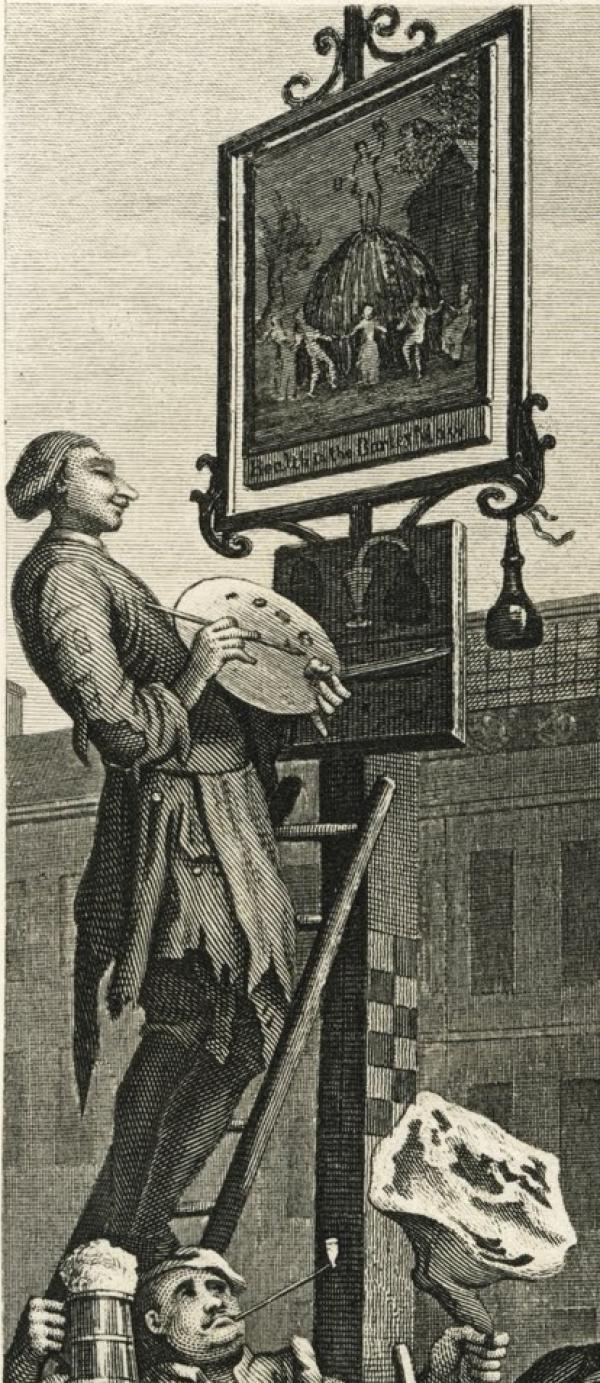The discovery that one can buy shit-jumbles word clouds as wall art (see previous post) raised an interesting analogy, and, perhaps, a suitable musing for a Sunday post.
Once upon a time, the walls of many British and American homes were adorned with texts of a religious nature - ‘Thou God seest me’, ‘The Lord is my Shepherd’ - often carefully crafted by friends or family members. These days, the writing on the wall is likely to be rather more secular (and effort-free); a plethora of mass-produced variations on ‘Love’, ‘Home’ or ‘Happiness’ can be picked up from the supermarket shelves along with the bananas and yoghurt, while larger framed or self-adhesive versions can be acquired at the click of a mouse.
All of this got me thinking; for whom is this display intended? The framed religious texts of bygone ages were intended to serve a spiritual purpose for the occupants of the house; a comfort in hard times and a reassurance of divine protection, perhaps, or an exhortation to stay on the straight and narrow. While such texts, whether embroidered, carved or hand-written, were often a demonstration of skill and diligence of the part of their creators, the choice of subject matter reflected a greater purpose founded in belief.
Today's words on the wall are far more likely to be aimed at impressing an external audience; social media has provided a way to share the contents of a private space with the world in general and show that you are keeping up with fashionable trends. While I can see the appeal of a specimen of elegant calligraphy as something to enjoy in one’s own home, much modern word art, bypassing the levels of interpretation required by more complex images, is designed to send a direct and somewhat peremptory message about what the observer should think or feel, making it the perfect art form for today’s lazy and emotionally incontinent social media culture.
Rather like the lettering on a bowl labelled ‘Dog’ - the dog can’t read and no one else is likely to eat out of it* - the content of today’s secular domestic texts is largely irrelevant to those living with them. However beautiful the lettering, written instructions to ‘cook’ and ‘eat’ in the kitchen or ‘wash’ in the bathroom are surely an exercise in redundancy, while a loving family is hardly likely to need a word cloud to testify to their mutual affection (though it’s grim to think that there are probably deeply unhappy homes out there lavishly decorated with words like ‘BLESSED’, ‘FAMILY’ or ‘HOPE’.)
Where our forebears would surround themselves with texts reminding them of a higher power, the focus of mass-produced word clouds leans heavily towards self-congratulation and outward show. Religious word displays and scripture quotations are still widely available, of course, although, in keeping with the spirit of the age, the painstaking craft of the past can now be replaced by wipe-clean vinyl, but, for the most part, the performative aspect of today’s word art is a striking testimony to the destructive cult of the self and the dual powers of ego and social media.
*update - just when you thought the things couldn’t get any more ridiculous: personalised word clouds for your dog, available in 17 different colour schemes...
https://www.stickers4walls.co.uk/products/personalised-dog-word-cloud-wall-sticker-31884


